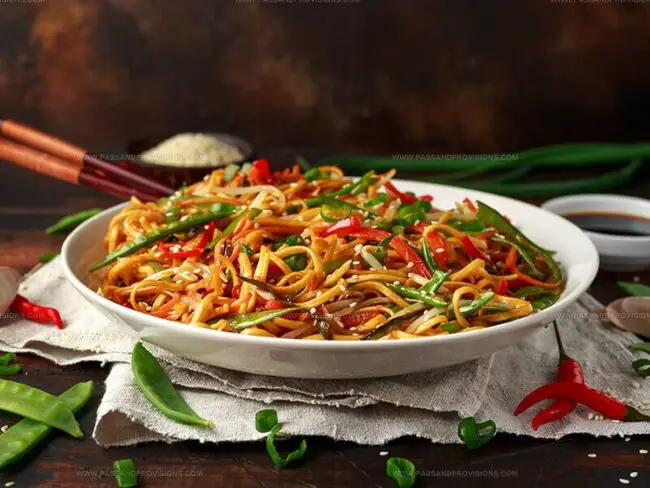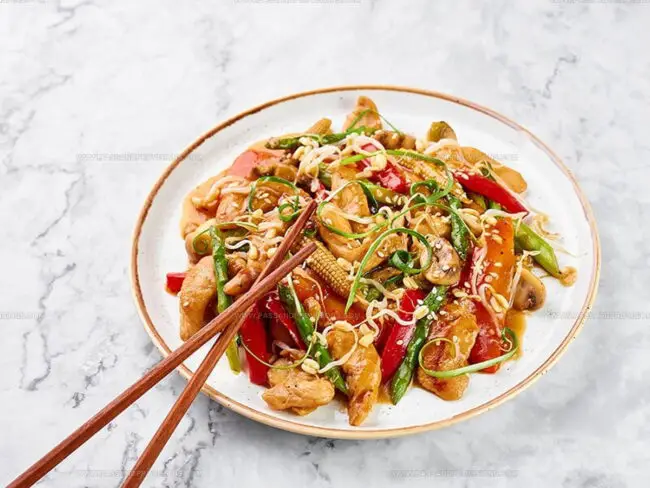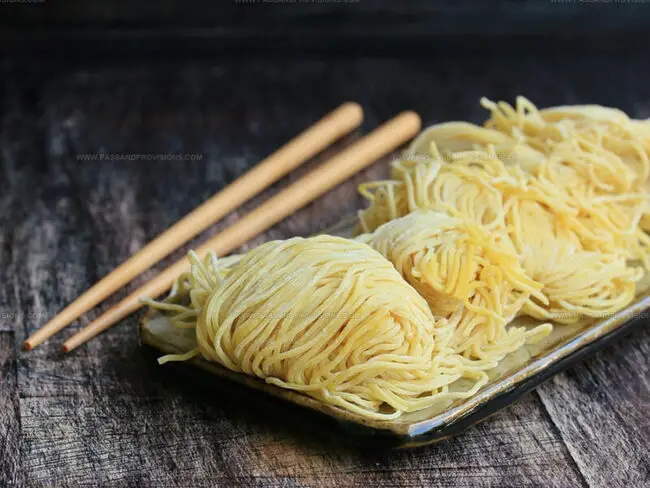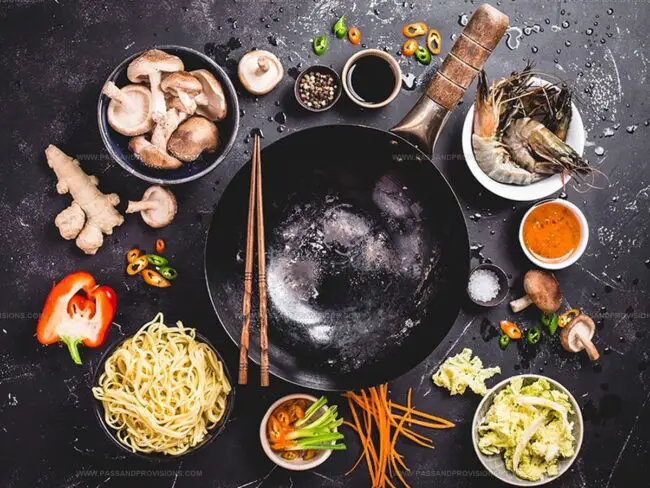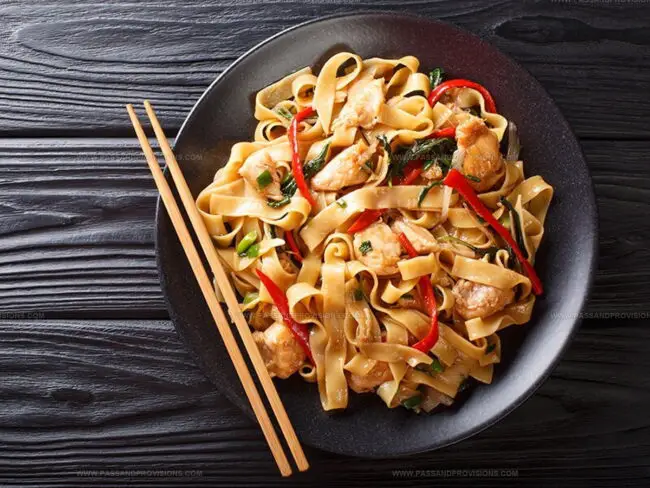Chow Mein or Chop Suey: Key Differences Explained
Chow mein, the beloved Chinese dish, brings together stir-fried noodles with vegetables and protein in a harmonious blend of textures.
Many people confuse this popular noodle creation with its culinary cousin, chop suey, though each has distinct characteristics.
The noodles in chow mein are typically crispy or soft depending on regional preferences, while other ingredients vary across different establishments.
Chinese restaurants around the world have adapted these recipes to suit local tastes without losing their authentic essence.
Throughout history, both dishes have evolved from their traditional roots to become staples in Western Chinese cuisine.
Now let's dive into what truly sets these two flavorful dishes apart and how you can recognize them on any menu.
Chow Mein and Chop Suey: Stories Behind Beloved Dishes
Follow me to discover the fascinating origins and cultural journeys of Chow Mein and Chop Suey, two beloved dishes that have become staples in Chinese-American cuisine and beyond.
Chow Mein
Ingredients:Instructions:
Tip: Season meat before cooking and keep veggie order for even cooking. For crispy chow mein, deep-fry parboiled noodles before adding stir-fry.
Chop Suey
Ingredients:Instructions:
Tip: Short-grain rice absorbs flavors best, and you can customize veggies and meat to your liking.
Chow Mein vs Chop Suey: Find Out Their Differences
Chow mein and chop suey have several key differences beyond their origins. Check this table for brief comparison between these dishes.
| Feature | Chow Mein | Chop Suey |
| Origin | Northern China; brought to America in 1850s | Toisan, Southern China; debated origins |
| Cuisine Type | Traditional Chinese | Chinese-American cuisine |
| Base Ingredient | Egg noodles (wheat and egg-based) | Vegetable and meat mix; served with rice or noodles optionally |
| Main Ingredients | Beef or seafood traditionally, plus broccoli, carrots, cabbage, bean sprouts, mushrooms | Leftovers-style mix of veggies & proteins; flexible ingredients |
| Sauce | Thin sauce: soy sauce, oyster sauce, chicken broth | Thicker sauce with soy, sesame oil, broth, cornstarch, sugar, sometimes wine |
| Cooking Method | Noodles cooked with ingredients together or separately (Hong Kong style is fried and crispy) | Ingredients cooked separately then combined; noodles or rice on side |
| Texture | Noodles can be soft or crispy (Hong Kong style) | Stir-fried veggies & meat; sauce thickened for coating |
| Popular Variations | Drunken noodles (Thai), Singapore vermicelli, Indian paneer noodles, Indonesian Cap cai | Highly varied due to flexible ingredients and cooking styles |
| Health Notes | Stir-fried with little oil; steamed noodles healthier than fried | Also stir-fried with little oil; flexible to reduce carbs by skipping grains |
Ingredients Used
The key to Chow Mein is the egg noodles. These are wheat and egg-based noodles that are somewhat similar to pasta but with a unique texture. You’ll find fresh egg noodles preferred, but dried ones work well too.
Chop Suey doesn’t rely on a specific base ingredient; it’s more of a stir-fry medley. You can serve Chop Suey over rice, noodles, or just on its own, making it super versatile.
Both dishes share a love for veggies like broccoli, carrots, cabbage, bean sprouts, and mushrooms. Chow Mein traditionally uses beef or seafood as its protein, keeping the dish focused and fresh from scratch.
Chop Suey shines as a leftovers-friendly dish. It’s a mix of whatever vegetables and proteins you have, from chicken to pork or shrimp.
Sauce
Chow Mein’s sauce is usually light and thin, made from soy sauce, oyster sauce, and chicken broth. Sometimes, just soy sauce alone is enough to bring out the flavor.
Chop Suey’s sauce, on the other hand, is thicker thanks to cornstarch and typically includes soy sauce, toasted sesame oil, broth, a bit of sugar, and sometimes Shaoxing wine to deepen the flavor. The thick sauce helps coat the veggies and protein nicely.
Cooking Technique
Traditional Chow Mein noodles are either steamed or cooked al dente, giving them a soft, chewy texture. The Hong Kong style takes it up a notch by boiling the noodles, drying them, dusting with cornflour, and deep-frying to get a crispy texture.
Chop Suey’s ingredients are usually cooked separately then tossed together just before serving. Noodles used with Chop Suey tend to be crispy fried noodles (like the Hong Kong style chow mein), or you might enjoy it with steamed rice on the side.
Variations
Chow Mein has inspired lots of tasty variations across Asia and beyond: Thailand’s spicy drunken noodles, Singapore’s vegetable vermicelli, India’s paneer noodles, and Indonesia’s Cap Cai stir-fry are just a few.
Chop Suey’s strength lies in its adaptability; recipes vary wildly depending on the cook’s preferences and available ingredients, making it a fun dish to try.
Health Notes
Both dishes are stir-fried with minimal oil, making them healthier options compared to deep-fried or heavy meals. If you want to keep things light, steamed noodles in Chow Mein are a great choice over fried ones.
Chop Suey’s flexibility lets you easily reduce carbs by skipping rice or noodles and loading up on veggies and protein. Both are delicious ways to enjoy Asian flavors without overdoing it on calories or fat.
How to Prepare Chow Mein & Chop Suey At Home
Delicious flavors explode in your mouth with each bite of chow mein and chop suey. Good news, anyone can create these crowd-pleasing meals without special cooking skills or fancy ingredients.
Read on to learn how to make these noodle delights.
Ideal Pairings to Enjoy CHow Mein and Chop Suey
Check out these ideal pairings to enjoy with Chow Mein and Chop Suey that complement their flavors and textures perfectly:
For Chow Mein:
For Chop Suey:
Got Questions? We’ve Got Solutions
1. Which dish is more authentic Chinese food?
Chow mein is considered more authentic in Chinese cuisine, while chop suey was likely created by Chinese immigrants in America as a way to use leftover ingredients.
2. Is one healthier than the other?
Neither is inherently healthier - it depends on how they're prepared. Both can be made healthier by adding more vegetables, using less oil, and choosing lean proteins.
3. Can I make these dishes at home easily?
Yes! Both dishes are relatively simple to make at home. Chow mein requires parboiled noodles stir-fried with vegetables and protein, while chop suey is a quicker stir-fry of mixed vegetables and meat with sauce over rice.
4. What sauces are typically used for each?
Chow mein often uses soy sauce, oyster sauce, and sesame oil. Chop suey typically has a thicker gravy-like sauce made with soy sauce, cornstarch, and sometimes chicken or beef broth.

